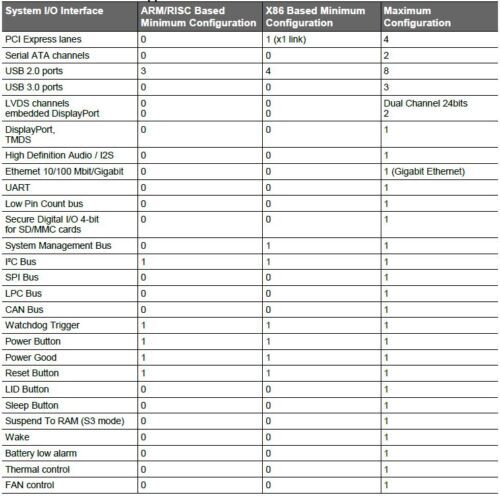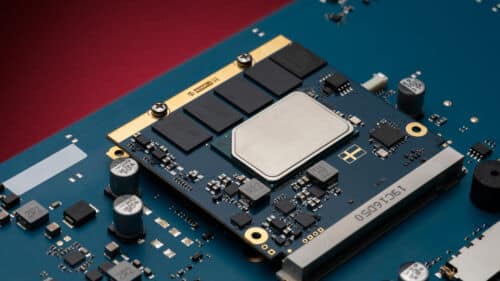Qseven
Background

Qseven
A Brief History
Qseven is an embedded computing standard that defines a small form factor computer module. The standard was first introduced by the Qseven Consortium, a group of companies in the embedded computing industry collaborating to develop and promote this standard. The Qseven Consortium was formed in 2008, and the first version of the Qseven specification, version 1.0, was released in 2009. The following year, Specification 1.20 was introduced, allowing Qseven modules to be based on both x86 and ARM architectures. Since 2013, the Qseven specification is hosted by the Standardization Group for Embedded Technologies (SGET).
The goal of the Qseven standard is to provide a compact, standardized, and versatile platform for embedded systems. Qseven modules typically incorporate key components such as processors, memory, and various interfaces on a small-sized module. This modular approach allows for easier integration into different embedded systems, reducing development time and effort.
The Qseven standard has undergone revisions and updates over the years to keep up with technological advancements and to address emerging needs in the embedded computing industry. It has gained popularity in applications that require small, power-efficient, and scalable computing solutions, such as industrial automation, medical devices, and other embedded systems.

Interfaces and Connectivity
Qseven modules offer versatile support for a broad range of standard interfaces, providing a flexible foundation for modern embedded systems. In addition to established interfaces like PCI Express and USB, Qseven modules incorporate contemporary communication protocols. Notably, Secure Digital Input Output (SDIO) is included for efficient device-to-device communication. SDIO supports various functionalities, making it a key component not only for storage but also for connectivity with small peripherals such as Wi-Fi and Bluetooth modules, SD cards, and MMC card flash memories. Additionaly, Controller Area Network (CAN) remains a robust choice for reliable networking in industrial and automotive applications.
Qseven modules supports many diffrent features, but to get a better overview, have a look at the table to the right. In the table, all mandatory and optional features are listed, aswell as the minimum and maximum required of the set.

Form Factor and Size
Form Factor and Size: Qseven modules conform to a standardized square shape, measuring 70mm on each side. Referred to as “Qseven,” this form factor emphasizes its quadratic dimensions. The module incorporates a distinct edge connector featuring 230 pins arranged in a 0.5mm pitch, ensuring standardized electrical and mechanical connections with the carrier board.
Due to its compact design, Qseven modules are ideal for applications with space constraints. The standardized dimensions and connector layout enhance interoperability, and ease of integration into diverse embedded systems. The modular design of Qseven allows for the integration of essential components, including processors, memory, and interfaces, onto a small-sized module.
The standardized form factor of Qseven modules facilitates seamless interchangeability and upgradeability, though specific features, processor choices, and additional functionalities may vary among modules from different manufacturers or versions of the Qseven standard.

GPU and Processor Support
GPU Integration and Graphics Performance: In Qseven modules, the integration of Graphics Processing Units (GPUs) within the System-on-Chip (SoC) architecture is essential for optimizing graphics performance. Qseven adheres to a standardized form factor, facilitating collaboration between the GPU and the Central Processing Unit (CPU). The GPU works with the CPU to enhance graphics processing capabilities, making Qseven modules suitable for graphics-intensive applications. This integration is particularly beneficial in areas prioritizing visual processing, such as augmented reality (AR) and virtual reality (VR) applications. By leveraging the combined strengths of GPU and CPU within the Qseven architecture, these modules meet the demands of diverse applications requiring robust graphics capabilities
Processor Support: Qseven’s adoption in embedded computing is driven by its flexibility, accommodating both X86 and ARM architectures. This dual support not only meets diverse industry needs but goes beyond mere compatibility. Developers can optimize designs for performance, power efficiency, or a balance of both based on project requirements. This adaptability effectively addresses challenges in various embedded applications. In essence, Qseven’s commitment to supporting both X86 and ARM architectures establishes it as a versatile platform, ensuring the longevity of Qseven-based solutions and making it a strategic choice for developers.

Qseven
Power, Cooling and Legacy Support
Power and Cooling Characteristics: The Qseven module design goes beyond mobile applications, addressing scenarios where passive cooling is vital. Thoughtful attention to power and cooling highlights the modules’ adaptability in diverse environments and commitment to energy efficiency standards. Qseven modules provide energy-efficient embedded solutions by incorporating low-power CPUs with effective passive cooling mechanisms. This approach guarantees the optimal performance of the embedded CPU while emphasizing power efficiency and competent thermal management. The careful consideration of the CPU’s power characteristics and cooling efficiency further emphasizes the versatility of Qseven modules.
Legacy Support and Standardization: Qseven modules distinguish themselves through a strong emphasis on standardization, fostering a modular system for easy interchangeability of carrier boards and accessories. This commitment ensures compatibility across platforms and supports diverse hardware. In the Qseven framework, standardization plays a pivotal role, streamlining integration, future-proofing systems for upgrades, and emphasizing overall versatility. Qseven’s dedication to contemporary standards and legacy support highlights its reliability and forward-thinking approach, making it a dependable and future-ready solution for industries prioritizing compatibility and seamless integration.



